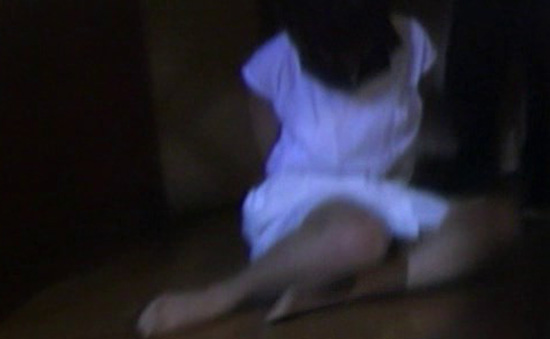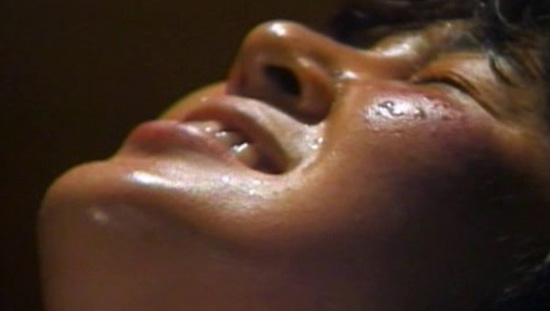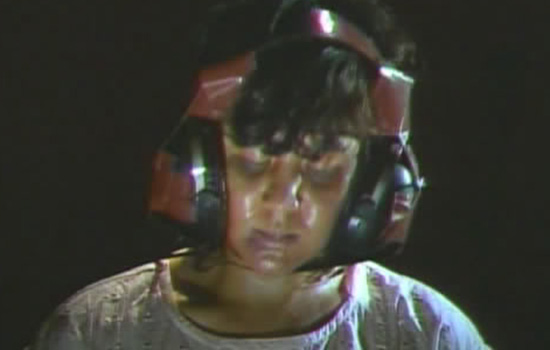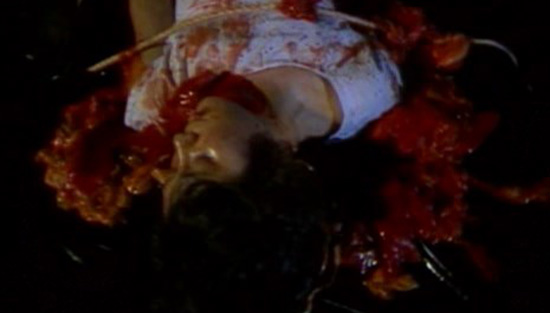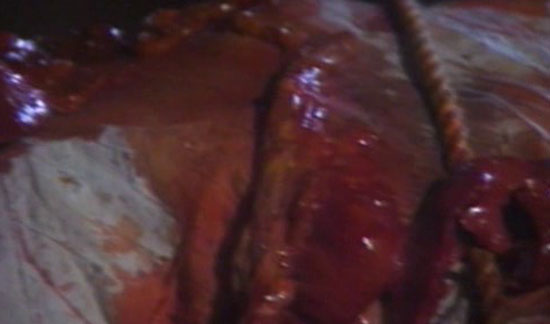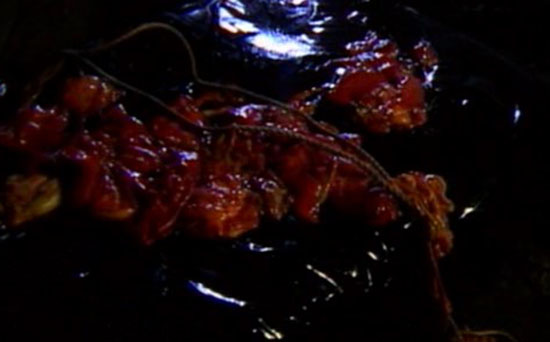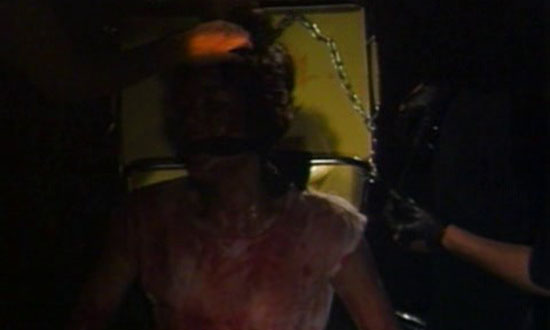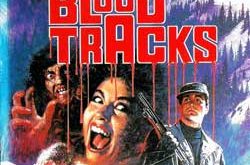SYNOPSIS:
A group of guys capture a young girl with the intent of hurting her. They torture her in many ways, from beating her to putting a sharp piece of needle-like metal through her eye which pierces across her retina.
REVIEW:
To call Guinea Pig: Devil’s Experiment “legendary” is not only accurate, it might just be an understatement. In fact, the whole Japanese Guinea Pig series has become a much-coveted treasure, an underground classic that often serves as the gateway for horror fans between Hollywood franchises and independent, no-holds-barred extreme cinema. It’s right up there with Faces of Death in terms of being “the” movie you need to see as a young horror fan (at least it was for my generation). So, besides the Charlie Sheen story (one that all too often takes all the attention away from the movie and its legacy), what is Devil’s Experiment all about, and why is it so important?
Put simply, Devil’s Experiment (or Gini piggu – Akuma no jikken in Japanese) is the first film in the Japanese Guinea Pig series. Written and directed by Satoru Ogura (while he did write a couple of the other Guinea Pig films, he’s more known as a producer, not only of the Guinea Pig series but also Lucky Sky Diamond [which is not part of this series] and The Shock Labyrinth, among others), Devil’s Experiment is very straight-forward, which might be a kind way of saying that on the surface, there isn’t much to the “story.” A young girl is kidnapped and put through a series of increasingly sadistic torture. We don’t know who she is, we don’t know why she was kidnapped, and we don’t know who the guys are who are torturing her. But according to a note at the beginning of the film, this was a tape that was found, and is now being investigated by the police. There’s no other opening or closing credits, so we don’t know who these people are – that would defeat the purpose anyway. This movie is about sadism and bloody special effects, not character development.
Each segment of Devil’s Experiment is marked with a title on screen, and sometimes with numbers that seem to go up as the torture gets more vicious. This gives the film a video-game feeling, and threatens to lift the veil as far as all this supposedly being “real.” However, I took it as something much more cruel – if this is to be seen as a snuff film, then it would appear the filmmakers took a psychotic glee in adding simple titles on the screen, adding insult to injury. We begin with “Hit”: the girl is bound to a chair while three men slap her.
They rub salt in her eyes and hit her with a bag full of coins. When “Kick” appears on screen, as you’d imagine, they kick her. “Claw” sounds scarier than it really is, and “Unconscious” is simply the girl being spun around and forced to drink alcohol until she vomits. By the time “A Sound” comes around, in which she is forced to listen to droning noises at high levels through headphones for nearly a full day, a newcomer to the film has to be wondering why there is so much hype around such a tame film. What they are doing to the girl is mean, sure, but has there even been a single drop of blood yet?
Then we get to the midway point, and we finally see why people are talking about this first installment of the Guinea Pig series. “Skin” brings the blood and effects work that supposedly looks so very real. “Burn” steps it all up a couple notches. “Worm” is disturbing, and “Guts” even more so, as first maggots, then bloody animal guts are spilled over her. When the guys bring a hammer into the picture, it gets upsetting; when they trade the hammer for a long, sharp needle, people start covering their eyes and looking away from the screen. But it’s also this second half of the film that has proven to be so influential.
By now, over 30 years after Devil’s Experiment was first released, special effects have moved forward by leaps and bounds, and we’ve seen far more disturbing things put to film. So much of that success was inspired by this film – actually, this series of films – whether directly or indirectly. Now films that might be lacking in story, or have at best a shaky plotline stringing scenes together, can still succeed thanks to the extreme bloody torture their writers and directors can dream up – as long as the effects are convincing.
Add in a good plot, and they become even better. Films like the August Underground series, the work of Tamakichi Anaru (Tumbling Doll of Flesh, Suicide Dolls, etc), and even the Hostel films have taken over where the Guinea Pig films left off. Koji Shiraishi’s Grotesque, Kim Jin-won’s The Butcher, and even Marcel Walz’s La Petite Mort movies owe a ton to this film. And as far as truly “found” footage goes, Devil’s Experiment set the stage for films like The Blair Witch Project and even Be My Cat – A Film for Anne, horror movies that do their very best to blur the line between fiction and reality and cause the audience to question if what they are seeing on screen is real. And let’s not forget Stephen Biro’s American Guinea Pig series, which has taken up the mantle and is already bringing things to new levels.
Are there better films than Guinea Pig: Devil’s Experiment? Of course there are. Hell, there are better Guinea Pig films than Devil’s Experiment. But this is where it all started. This is the film that helped set the standard for extreme horror cinema. And while it does take a bit of time to really get going, once it does, it stills packs a punch with moments that’ll make the audience cringe, even today. I’d recommend it to anyone that loves their blood and gore, but it’s a must-see for any horror fan that wants to learn the history of the genre.
 Horror News | HNN Official Site | Horror Movies,Trailers, Reviews
Horror News | HNN Official Site | Horror Movies,Trailers, Reviews

